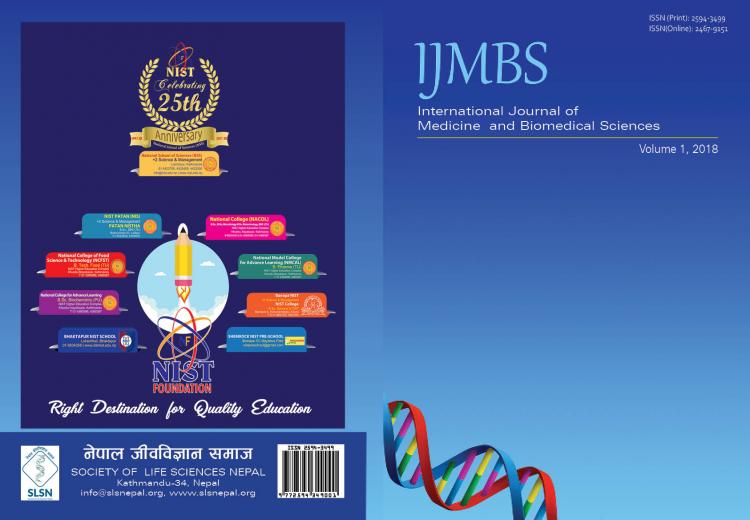Antioxidant Activity of Selected Medicinal Plants of Nepal.
DOI:
https://doi.org/10.55530/ijmbiosnepal.v2i4.33Keywords:
Antioxidant, DPPH, Maceration, MethanolAbstract
Introduction: Many natural products are the source of therapeutic agents having potential pharmacological activity. Traditional medicinal practices have long history for serving human kind.The present study was designed to collect, identify, prepare herbarium and to evaluate the antioxidant activity of selected medicinal plants.
Method : Collected plant species were subjected to maceration in methanol for 72 hrs. Antioxidant activity of plant extracts was assessed by using DPPH free radical scavenging method in different concentrations (1 μg/ml, 3 μg/ml, 5 μg/ml, 7 μg/ml and 10 μg/ml) and percentage inhibition and effective concentration (EC50) was calculated.
Result
Result indicates that EC50 of D. boryanum (3.75 μg/ml) and P. guajava (3.89 μg/ml) was less, EC50 of R. nepalensis (5.03 μg/ml) and S. japonica (6.75 μg/ml) was comparable and EC50 of M. macrophylla (7.86 μg/ml), B. asiatica (9.14 μg/ml), E. adenophorum (7.78 μg/ml), E. crassipes (8.21 μg/ml) and N. arbortritis (8.16 μg/ml) was higher than ascorbic acid (4.73 μg/ml).
Conclusion
Our result shows that D. boryanum and P. gvajava possess higher antioxidant activity than the ascorbic acid implying that, they could be potential free radical scavenging agents and could be developed as pharmaceutical agents.
Downloads
Published
How to Cite
Issue
Section
License
Copyright (c) 2017 International Journal of Medicine and Biomedical SciencesIJMBioS follows the following Terms and License of the manuscript under Attribution-NonCommercial 4.0 International (CC BY-NC 4.0) where Author and Journal are can Share — copy and redistribute the material in any medium or format and Adapt — remix, transform, and build upon the material, and it is Non-Commercial.





